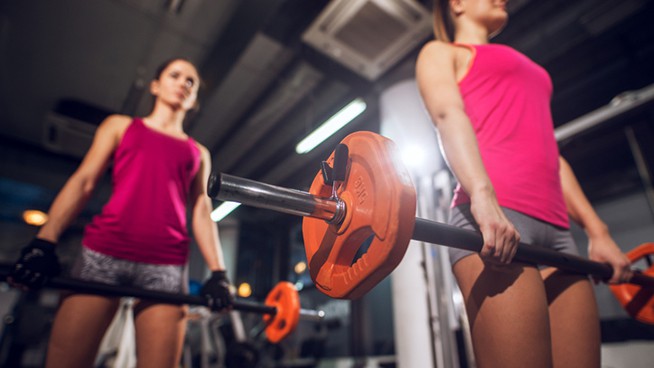Have you ever thought of your lungs as a muscle group? They technically are not muscles, but they are controlled by muscles and behave similarly. They are made of soft tissues that expand and compress with activity. Like anything else in the body that behaves this way, these tissues expand more with greater contractions. And like any other muscle, they need to warm up if they are going to perform at their maximum efforts. Vice versa, they can get exhausted quickly, and need ample time to rest. Lastly, like all muscles, the lungs can be trained to be in better shape, and become more resilient to movement stresses. All athletes need healthy and strong lungs, but no other athlete relies on lung power and efficiency like endurance athletes do.
The Athlete’s Breath
With that, it makes sense that all the muscles that do control an athlete’s breath need to be well-conditioned. There are literally dozens of muscles that directly and indirectly contribute to the inspiration and expiration of breathing. Breathing is, of course, a movement in itself. Rather than isolate and try to condition each muscle, it is best to condition the movement of breathing itself, and there’s no more important time than during warm-ups.
For athletes, the primary focus on warm-ups before competition is to get the muscles primed to give maximal effort and execute their movements with great precision and efficiency. Before a swim, bike, or running race, athletes will go through their reps to prime the muscles to race. Among the muscles contributing to propelling the athlete forward, we also need to properly warm up the breathing muscles.
A 2019 study from Grand Valley State University conducted an experiment examining the performance of seventeen collegiate cross country athletes. The experiment was simple. One time they raced using a standard warm-up. Another time they used a breathing device designed to resist breathing mechanics, essentially weightlifting for the lungs. They raced 3,200 meters (2 miles), a distance they commonly competed in. In all, 15 of the 17 high-level runners shaved significant time off their runs, for an average of 20 seconds faster when they used the breathing warm-up.
3,200-Meter Run
This is a significant find. A 3,200-meter run is relatively short for endurance athletes. Shaving 20 seconds off their time is a huge difference, typically the difference between winning or losing a race of that distance. To further illustrate, most NCAA athletes do not run 20 seconds faster than their high school selves did.
I’m not saying you will instantly shave 20 seconds off your two-mile time, but 15 high-level runners sure did! The best approach is completing a modified version of your typical warm-up and mixing in some breathing exercises before a competition.
Pre-Race Anxiety
Special consideration needs to be given to pre-race anxiety. We all know that heart and breathing rates go up before a big moment. The need to warm up these muscles becomes less and less, but that depends on the athlete and how they are coping before the race.
The good thing is you don’t need any fancy equipment to accomplish a proper breathing warm-up. The athletes in the experiment used a probably expensive piece of equipment that gave roughly 50% of their max resistance for 30 breaths. To best replicate this before a race, perhaps about half those reps are an excellent place to start. Athletes should take roughly 15 quick breaths of inspiration, followed by calm exhales.
It is important to first utilize and experiment with these techniques in practice before an important race or match. Athletes should always time themselves and take mental notes on the routines that lead to their best times. A proper breathing warm-up has shown lots of promise to deliver more positive outcomes in performance, but it is acknowledged that each athlete is different, and they should find what works best for them.
RECOMMENDED FOR YOU
MOST POPULAR
Have you ever thought of your lungs as a muscle group? They technically are not muscles, but they are controlled by muscles and behave similarly. They are made of soft tissues that expand and compress with activity. Like anything else in the body that behaves this way, these tissues expand more with greater contractions. And like any other muscle, they need to warm up if they are going to perform at their maximum efforts. Vice versa, they can get exhausted quickly, and need ample time to rest. Lastly, like all muscles, the lungs can be trained to be in better shape, and become more resilient to movement stresses. All athletes need healthy and strong lungs, but no other athlete relies on lung power and efficiency like endurance athletes do.
The Athlete’s Breath
With that, it makes sense that all the muscles that do control an athlete’s breath need to be well-conditioned. There are literally dozens of muscles that directly and indirectly contribute to the inspiration and expiration of breathing. Breathing is, of course, a movement in itself. Rather than isolate and try to condition each muscle, it is best to condition the movement of breathing itself, and there’s no more important time than during warm-ups.
For athletes, the primary focus on warm-ups before competition is to get the muscles primed to give maximal effort and execute their movements with great precision and efficiency. Before a swim, bike, or running race, athletes will go through their reps to prime the muscles to race. Among the muscles contributing to propelling the athlete forward, we also need to properly warm up the breathing muscles.
A 2019 study from Grand Valley State University conducted an experiment examining the performance of seventeen collegiate cross country athletes. The experiment was simple. One time they raced using a standard warm-up. Another time they used a breathing device designed to resist breathing mechanics, essentially weightlifting for the lungs. They raced 3,200 meters (2 miles), a distance they commonly competed in. In all, 15 of the 17 high-level runners shaved significant time off their runs, for an average of 20 seconds faster when they used the breathing warm-up.
3,200-Meter Run
This is a significant find. A 3,200-meter run is relatively short for endurance athletes. Shaving 20 seconds off their time is a huge difference, typically the difference between winning or losing a race of that distance. To further illustrate, most NCAA athletes do not run 20 seconds faster than their high school selves did.
I’m not saying you will instantly shave 20 seconds off your two-mile time, but 15 high-level runners sure did! The best approach is completing a modified version of your typical warm-up and mixing in some breathing exercises before a competition.
Pre-Race Anxiety
Special consideration needs to be given to pre-race anxiety. We all know that heart and breathing rates go up before a big moment. The need to warm up these muscles becomes less and less, but that depends on the athlete and how they are coping before the race.
The good thing is you don’t need any fancy equipment to accomplish a proper breathing warm-up. The athletes in the experiment used a probably expensive piece of equipment that gave roughly 50% of their max resistance for 30 breaths. To best replicate this before a race, perhaps about half those reps are an excellent place to start. Athletes should take roughly 15 quick breaths of inspiration, followed by calm exhales.
It is important to first utilize and experiment with these techniques in practice before an important race or match. Athletes should always time themselves and take mental notes on the routines that lead to their best times. A proper breathing warm-up has shown lots of promise to deliver more positive outcomes in performance, but it is acknowledged that each athlete is different, and they should find what works best for them.











